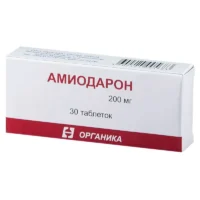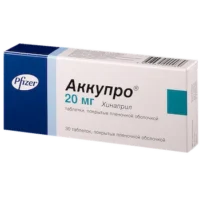Description
Lercamen-10 Coated Tablets 10 mg. №28
Ingredients:
Lercamen-10 tablets contain 10 mg of the active ingredient Lercanidipine hydrochloride. Other ingredients include lactose monohydrate, maize starch, povidone, magnesium stearate, and talc.
Mechanism of Action:
The pharmacological action of Lercanidipine involves blocking calcium channels in the blood vessels, leading to vasodilation and decreased peripheral resistance. This mechanism helps to reduce blood pressure without significantly affecting heart rate.
Indications for Use:
Lercamen-10 is indicated for the treatment of essential hypertension in adults. It helps lower blood pressure and reduce the risk of cardiovascular events.
Contraindications:
Do not use Lercamen-10 if you are allergic to Lercanidipine or any other ingredients in the tablets. It is contraindicated in patients with severe liver or kidney impairment.
Side Effects:
Common side effects may include dizziness, headache, edema, flushing, and palpitations. If any of these effects persist or worsen, notify your doctor promptly.
Usage Instructions:
It is recommended to take Lercamen-10 tablets orally, once a day, preferably in the morning. The usual dose is 10 mg per day. The tablets should be swallowed whole with a glass of water.
Benefits Compared to Analogues:
Compared to other calcium channel blockers, Lercanidipine has been reported to have a lower incidence of peripheral edema, making it a favorable choice for patients prone to this side effect.
Suitable Patient Groups:
Lercamen-10 is suitable for adult patients with essential hypertension. It is not recommended for use in children, pregnant women, or individuals with severe liver or kidney impairment without medical supervision.
Storage and Shelf Life:
Store Lercamen-10 tablets in a cool, dry place away from direct sunlight. Keep them out of reach of children. Check the expiration date on the packaging and do not use the tablets if expired.
Packaging Description:
Lercamen-10 Coated Tablets 10 mg. №28 are packaged in blister packs containing 28 tablets. Each tablet is coated for easy swallowing and protection.
Scientific Evidence:
Studies have shown that Lercanidipine, the active ingredient in Lercamen-10 tablets, is effective in lowering blood pressure and has a good tolerability profile. Clinical trials have demonstrated its efficacy in reducing both systolic and diastolic blood pressure levels.
Additional Information:
It is important to monitor blood pressure regularly while taking Lercamen-10 to ensure optimal control. Inform your doctor about any other medications or supplements you are taking to avoid potential drug interactions.





